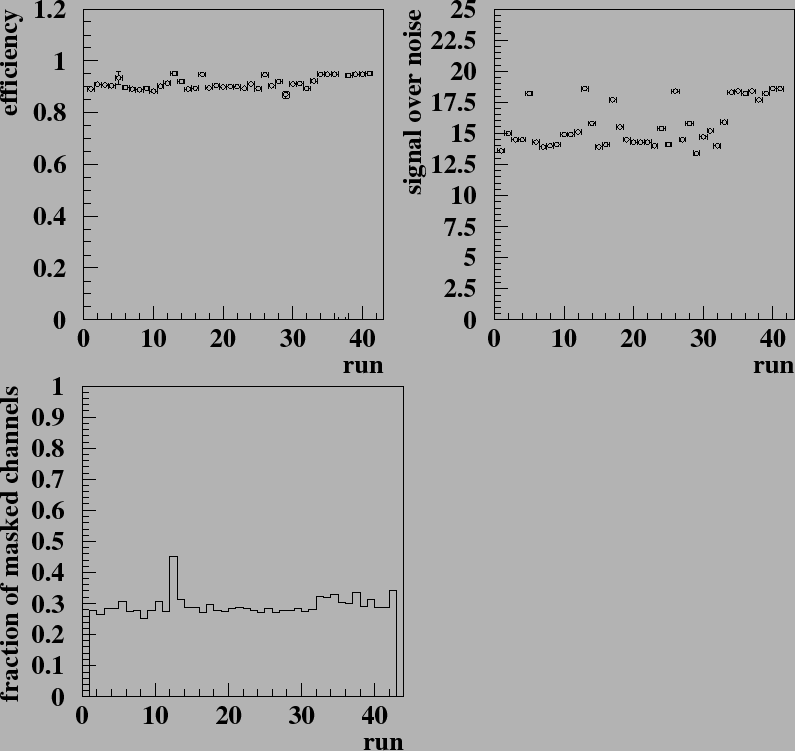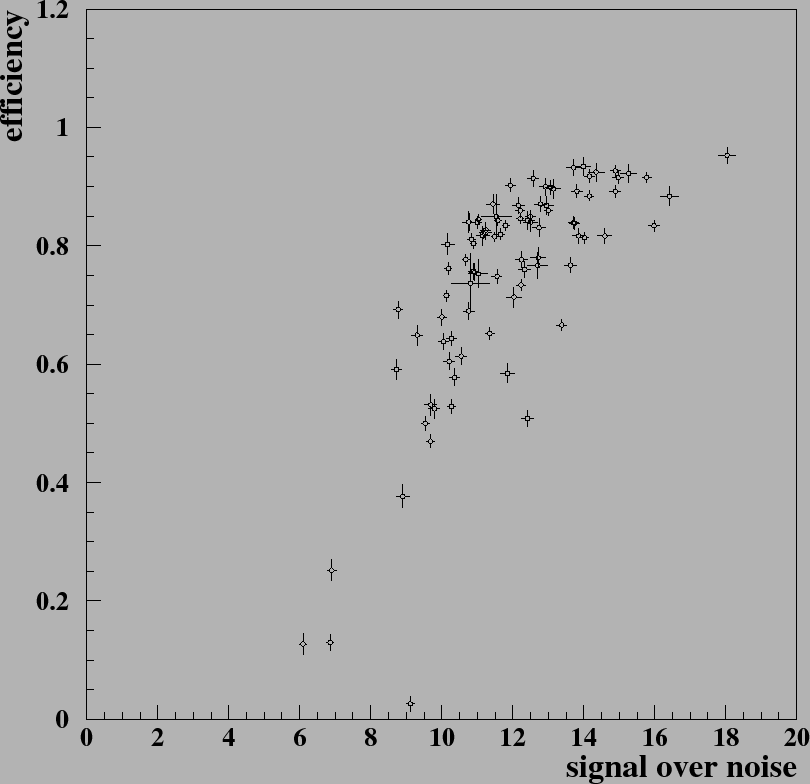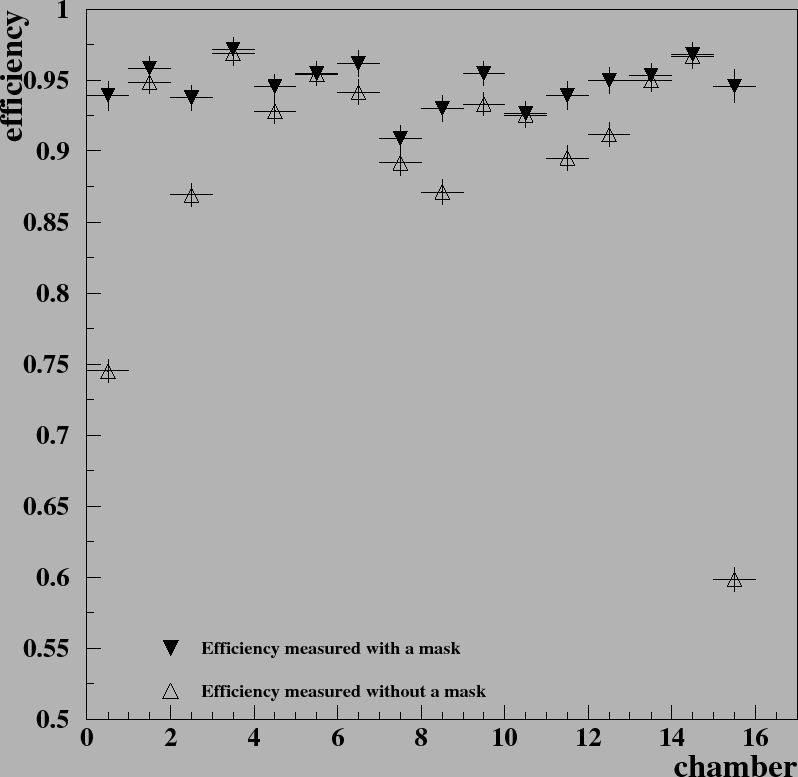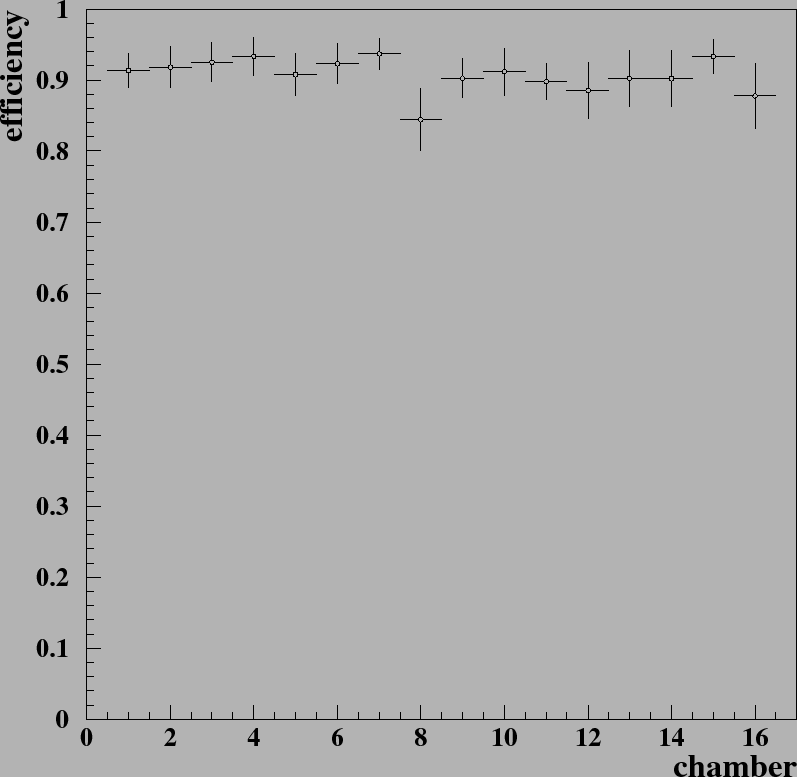Next: Efficiency of the PC Up: Hit efficiency Previous: Track Selection Contents
The most stable results were shown by chambers in station MS01. The station contains 16 chambers in four layers, which use the old Helix chips of version 2.1 which have not been replaced during the shutdown in 2000-2002.
The efficiency of the chambers and the number of masked strips have been checked for a running period of 6 weeks. For each run a sample of 50.000 events was considered and a new mask was created.
The main factor which influenced the measured efficiency is some specific feature in the Inner Tracker steering program. In case of sparks or cathode shorts the GEM voltage setting of one chamber or a group of chambers is temporarily reduced to lower values. This causes a lower efficiency of this group of chambers. Another possible bias could come from ghost tracks produced by the VDS track reconstruction program. This is at a negligible level with the applied cuts on the number of used VDS hits and the ITR confirmation requirement.
 |
The behavior of the efficiency with time for one of the chambers in MS01 is shown in Fig. 5.5 on the left. The development in time of the signal over noise distribution for the hits used in the efficiency calculation is shown in the middle plot. Fig. 5.6 shows that a strong correlation exists between signal over noise and efficiency.
 |
Runs with higher efficiency or better signal over noise ratio (S/N) correspond to minimum bias data taking while the runs taken with dilepton trigger (most of the runs) show a slightly lower efficiency. Such a behavior can be explained by a read-out instability observed in triggered runs.
The stability of the number of masked channels for this particular chamber is shown on the right plot in Fig. 5.5. As can be seen the distribution is flat and only in a few runs more channels were masked. The deviation is in the order of a few percent. No indication of performance degradation (for example, increase of the number of masked channels or decreasing efficiency) can be observed.
The mean efficiencies for all chambers in MS01 are shown in Fig 5.8. As can be seen 80% of all chambers have efficiencies well above 90% with a standard deviation of the order of 2-3%.
The ``real'' efficiency strongly depends on the number of masked strips in the chambers. Figure 5.7 shows efficiencies for chambers of MS01 for the run 20794 with and without mask.
 |
To achieve the shown efficiency level the GEM voltages have been adjusted in 2000 and 2002, in order to compensate gain variations from the GEM foils. Further increase of the GEM voltage parameters causes an operational instability without further increase in efficiency.
 |
Yury Gorbunov 2010-10-21